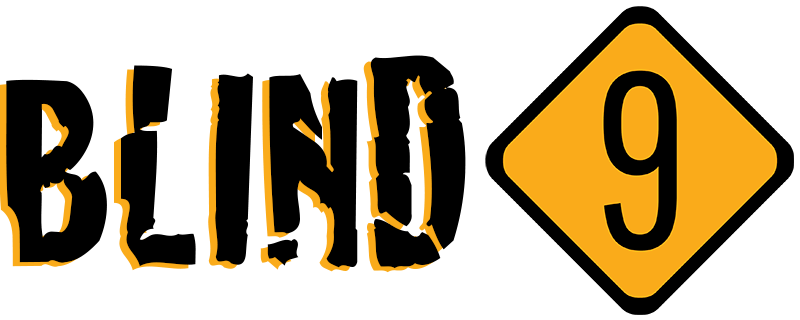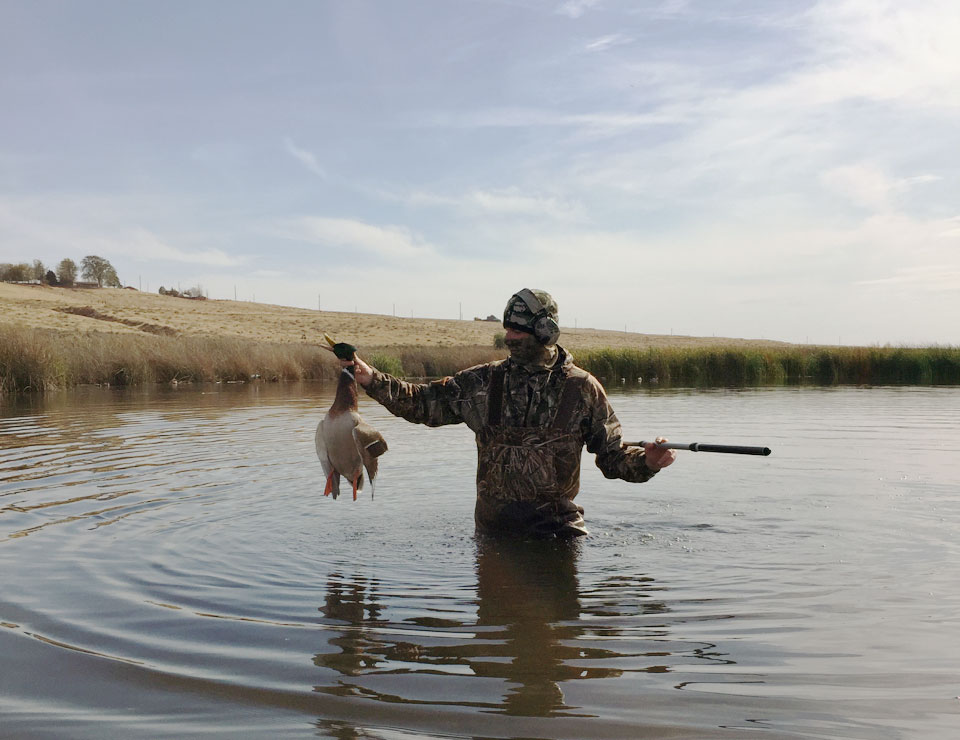Opening day. I don’t know how others feel about it, but I always have mixed feelings. I’m extremely excited as an off-season of reflection, preparation, and anticipation finds it’s apex. Yet I’m also wary of it. I know I will feel some frustration because the areas where we hunt will be crowded, our favorite spots taken, our guns fired too often.
I know some hunters who avoid opening day just because they don’t like the rush of people to get to spots, nor the all-to-excited hunters with guns merrily skybusting away, spooking birds throughout the area. I think we all dream of that seemingly virgin spot, unsullied by shotgun hulls and stomping wader boots, where we are all alone with our hunt, where the only variables to the experience are created by us and our quarry. If you have access only to public hunting grounds this is, of course, rare.
Tim, Scott and I drove East from Vancouver, WA on I-84 towards the Tri-Cities area on Friday, October 16, 2015. Tim had scored an opening day lottery pick at the fee hunting unit of McNary National Wildlife Refuge, one of our favorite late-season hunting spots. The unit is on the Burbank Slough, a small body of water near the junction of the Snake and Columbia Rivers. The whole area here is a focal point of waterfowl during peak migration and manages to carry a large number of local ducks as well. The pick meant we would not have to try to fight people for spots in walk-in areas closer to home, which is comforting. When you’re driving four hours for a hunt you want some assurance that you’ll get a spot.
When we hunt McNary we grab dinner in the Tri-Cities area, this time going to Taverna Tagaris in Richland to sample some excellent local wine and steaks and chops. I almost ordered the seared duck breast, but knew the farmed duck would not compare to the deep, red, rich meat of the local mallards. After dinner we went to our hotel in Pasco, near the airport, which is a 10-minute drive to the refuge check station. A 5 a.m. check-in at the refuge means we can muster at the late hour of 4 or 4:15. I tossed and turned most of the night. I would begin to drift off only to get a jolt of adrenaline from the thought of a flock of mallards skidding into our decoys, or the slight panic wondering if I had left something important at home. I think I finally slipped into R.E.M. sleep about 2 a.m.
At check-in, there were only about 30 hunters, which when you look at the annual stats from McNary seems about right. If you parse them out into group of 2-4 you’ll get about 10-11 blinds worth of hunters. Tim had the 13th pick, and due to no-shows we ended up picking 7th or 8th. The worker at the check station warned that the blinds at the south end of the slough, 15-21, had little of the normal grass cover due to summer fires in the area, so we decided to stick to blinds on the north side. The group that picked right before us chose the blind we thought we would get, blind 9, so we decided on blind 13, one of the three northernmost blinds.
Lost?
We parked, unloaded, packed up and started walking the half mile to the blind down a wide mowed path. We found a spur to the right of the path, which quickly degraded into a thin trail winding into the 7-foot bulrush lining the banks of the slough. On the map, blind 13 sits at the tip of a small point sticking into the slough. Looking back, I’m not sure we actually found it. We tramped through the stiff bulrush grass and found a a scaffold blind completely overgrown. This blind, however, was not on a point. Instead, it was just off the base of a cove.
Looking back, I think we must have found an old blind and not what is now marked as Blind 13 on the map. During a retrieve of a duck Tim had made it out to the point where Blind 13 is marked and found a marker for it but no blind, just a tree. Based on what I saw with bird activity that point certainly would have seen more action from passing shots and probably would have attracted more ducks due to their flight patterns.
Nevertheless, it was dark and we did not have time to think about it. Tim set upon the task of cutting away enough space in the blind for us to hunt, while Scott and I hurried to set out the 3-dozen decoys. We set the decoys up in a clump to the left of the blind, blocking the weedy entrance to a small pond, and in a line off to the right, jutting into the water of the slough. We had to hurry because legal shooting time (LST) was only about 20 minutes away. Once the decoys were set, the grass cleared and our gear stowed in the grass behind the blind we had only a few minutes to settle in before LST.
In previous visits to McNary late in the season you can hear ducks by the hundreds whistling above you, their silhouettes just visible in the morning azure. If you settle in quickly enough you are rewarded with a cacophony of duck noises. Many simply splash into the decoys all around you. Yet on opening day it was remarkably quite. What ducks had been around we spooked trampling into the blind. One or two splashed nearby as we waited but it was difficult to see them and they flushed just as quickly as they had arrived.
Early shots
As almost always happens here, the shooting started off in the distance a few minutes before legal shooting time and we readied for the onslaught, our eyes scanning through the tules. Yet a few minutes passed and still no ducks. Other blinds began blasting away and the refuge began to sound like a war zone.
My first shot came on a mallard drake that rocketed by us overhead in the dim light. No matter how often we discuss patience and discipline I’m always the first to shoot and, coincidentally, the first to miss. Tim took the first bird of the season, a hen mallard that dumped into the decoys shortly afterwards. My first bird was a short while later, a ringneck hen.
Adjustments to the Decoys
We saw a lot of birds that morning, but the birds working us were getting spooked by nearby blinds and not finishing in our decoy set. I’m a big believer in watching the birds’ behavior and making adjustments during a hunt. As the birds flew by us but did not attempt to land we decided to change the decoys around a little. We moved more from the left side to the right, as that’s where birds seemed to be most interested, with some landing outside of our shooting range. Again, though, it seemed more birds passed us by as the morning minutes ticked away.
In previous hunts we started with clumps or lines of decoys in open water, the farthest at the edge of our comfortable shooting range (35 yeards) only to find drawing the decoys in near the shoreline was far more effective. The problem is that we’re so used smaller, marshier hunting holes that we employ defensive decoying, placing them in spots that you are trying to deny the birds. In this slough, that simply doesn’t work. We brought all the decoys within a few feet of the shoreline, lining left and right of us and left three of our best-looking mallards in the water in front of our blind about 15 yards out, angled toward the shore. My hope was they would look like they just landed and were swimming towards their buddies. That worked. Within a few minutes we began to get birds taking longer looks at our spread and attempting to finish. We began to bag more birds.
We applied the final cherry on top to this winning set-up after a breeze started. We adding a wind duck to the shoreline about 10 yards to the right of the blind. That began to attract even more ducks. By this time other hunters had begun to pack up so we could work groups more easily as they weren’t being frightened by nearby shooting. As many waterfowl hunters know, it’s satisfying be able to get your decoys and calling working without interference. You learn more and have more success.
One Last Flock
Once the action died down at midday we decided to give the hunt another 15 minutes before packing up. I’m glad we did! We settled into the blind. The sun had gone up and was pushing the temps into the high 60s, which feels just too warm for duck hunting in these parts. We were all getting sleepy. Just as time was up a flock of 4 mallards came out of the sun and flew over the blind off to the right and circled back. I made a feeding chuckle on the call and they made another pass over the blind. As they swung over us another flock, pintails, joined them and these 8-10 birds dropped their feet and swung their way into the open water in front of the blind. We dropped 4 of them.
Retrieval Problems
This great ending was tainted, as we were not able to retrieve two of the four ducks we dropped. Two were both quite alive out beyond run range by the time we reloaded. One slipped into the tules and escaped and the other paddled across the slough, through water too deep for a retrieval by a hunter in waders, to the far shoreline.
This failure had happened three other times during the hunt, with one mallard surviving multiple water shots before getting into the weeds and disappearing, another swimming wounded across the slough, and one that died but blew into deep water. On the way out Tim retrieved the dead duck visible from the path floating about a half mile up the slough in shallow water.
We’ve had similar problems here in the past. On our first hunt we shot at birds overhead (well within shooting range) that would fall into the dense bulrush, never to be seen again. On others the wind would quickly carry their bodies out past deep water or they would paddle away, out of range. We made some adjustments by adding a 12-foot retrieval pole and limiting our shots to ducks over the water. These helped but we need another solution. None of us like it when we are not able to retrieve ducks, especially the wounded ones. A light kayak or dog could be our next major purchase.

